JOURNAL BAC

























The O cial Journal of the International Union of Bricklayers and Allied Craftworkers
(ISSN 0362-3696) | ISSUE 1 | 2023
EXECUTIVE BOARD
Timothy Driscoll President
Jeremiah Sullivan, Jr. Secretary-Treasurer
Keith Hocevar
Executive Vice President
REGIONAL DIRECTORS
NORTHEAST
Al Catalano
IU Northeast Regional Director, Albany, NY
Email: acatalano@bacweb.org
O ce: 518-439-6080
SOUTH
Ed Navarro
IU South Regional Director, Lawton, OK
Email: enavarro@bacweb.org
O ce: 580-357-3048
NORTH CENTRAL
Jeremy Rivas
IU North Central Regional Director, Portage, IN
Email: jrivas@bacweb.org
O ce: 219-248-5017
WEST
Darin Compton
IU West Regional Director, San Leandro, CA
Email: dcompton@bacweb.org
O ce: 202-304-8582
CANADA
Craig Strudwick
IU Canada Regional Director, Ottawa, ON
Email: cstrudwick@bacweb.org
O ce: 613-830-0333
Editorial Staff: Emily Smith, Kim Ward
The BAC Journal (ISSN 0362-3696) is published quarterly for $1.50 per year in advance, postage paid, for the U.S. and Canada ($1.75 per year in all foreign countries belonging to the Postal Union) by the International Union of Bricklayers and Allied Craftworkers. Periodicals class postage paid Washington, DC, and additional mailing offices.
Postmaster: Send address changes to the BAC Journal, International Union of Bricklayers and Allied Craftworkers, 620 F Street, NW Washington, DC 20004.
Canadian Postmaster: Send address changes to PO Box 503, RPO West Beaver Creek, Richmond Hill, ON L4B 4R6
Published for Bricklayers, Stone Masons, Plasterers, Tile Layers, Marble Masons, Cement Masons, Mosaic and Terrazzo Workers, Finishers, Pointers, Cleaners, and Caulkers.
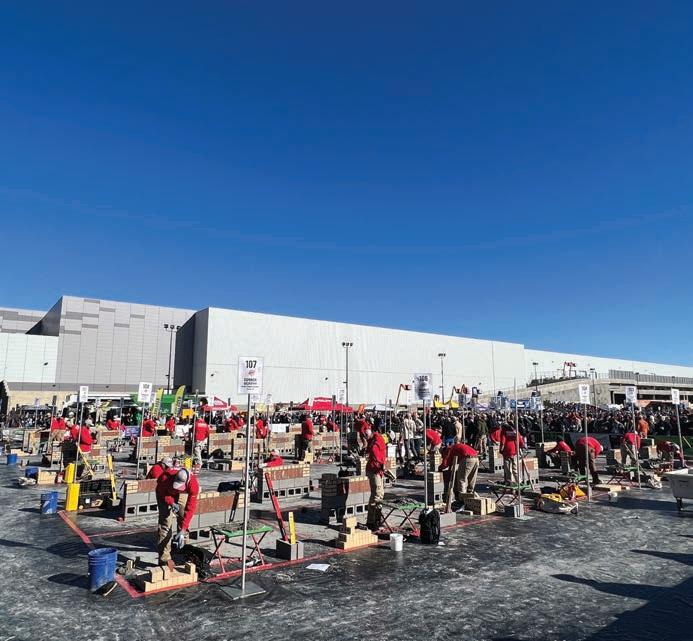








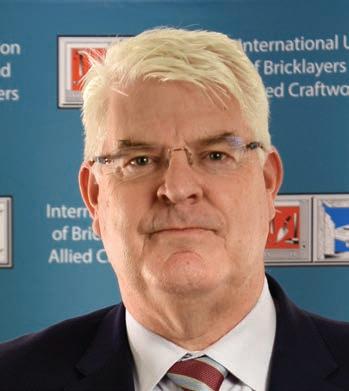
This adage represents an enduring principle for our union.
BAC members recognize that the craft skills — honed through apprenticeship, training, and constant skills advancement over a career — are what make us an essential part of the projects that we undertake with our signatory contractors. These skills are earned through persistence and a passion for our crafts, and an abiding commitment to the fair treatment of all workers engaged in our trades.
However, we also recognize that there are those who seek to diminish our values on the jobsite. Whether it is non-union contractors and developers who want to undermine the wages and conditions that our local unions have fought to establish, or politicians who attack the rights of unions to represent workers, we must be prepared to fight these attacks on workers’ rights. The pages of this BAC Journal detail the di erent ways that BAC is engaged in the fight for justice in the workplace.
Last month BAC members and workers across Michigan sent an unmistakable message to politicians that opposing workers’ rights can cost you your job. Voters in Michigan replaced the anti-union GOP majorities in both the State Senate
and House of Representatives with a pro-worker, Democratic majority that moved quickly to repeal Michigan’s bogus “right-to-work” (RTW) law and restore prevailing wage for construction projects. This historic win, the first time in 58 years that RTW was repealed, highlights the importance of why we must support labor-friendly candidates (p 20–21).
While at the federal level, BAC continues to benefit from the worker-friendly initiatives and programs that the Biden Administration has put into place. From pension security to strengthening Davis-Bacon, to project labor agreements, to infrastructure investments, to penalizing employers that exploit immigrants without work authorization, President Biden has repeatedly proven himself a friend of labor (p 17–18).
The fundamental principle that labor deserves dignity, and workers are entitled to a voice in their workplace, is grounded in the recognition that commitment to our trade skills and each other are what distinguishes BAC in our industry. That commitment is on display on projects across North America every day, such as the J Resort project in Reno, NV (p 3–9), and in the apprenticeship and training programs that thousands of BAC
members participate in each day (p 12, 15, 24–26).
Our union is a talented and diverse community of craftworkers dedicated to advancing BAC’s voice in the workplace. Retired IU Secretary-Treasurer Bob Arnold has been a key part of that community for over 45 years. He dedicated many of those years to training future generations of craftworkers, before helping to lead our International Union these last three years. I want to thank him for his support, example, and friendship.
Of course, when one door closes, another opens, and with that we welcome Brother Jeremiah Sullivan, Jr. to the role of IU Secretary-Treasurer. Jerry has been an invaluable part of the IU leadership since 2020, bringing a wealth of experience and vision to his new position. I am also excited to introduce Brother Keith Hocevar as IU Executive Vice President. Keith’s energy and creativity promise to strengthen our e orts to grow the unionized masonry industry.
Brothers and Sisters: Stay healthy, stay safe!
Este adagio representa un principio perdurable para nuestro sindicato. Los miembros de BAC reconocen que las habilidades artesanales, perfeccionadas a través del aprendizaje, la formación y el progreso constante de las habilidades a lo largo de una carrera, son lo que nos convierte en una parte esencial de los proyectos que emprendemos con nuestros contratistas signatarios. Estas competencias se adquieren mediante la perseverancia y la pasión por nuestros oficios, y un compromiso permanente con el trato justo de todos los trabajadores que se dedican a ellos.







Sin embargo, también reconocemos que hay quienes tratan de menoscabar nuestros valores en el lugar de trabajo. Ya se trate de contratistas y promotores no sindicados que pretenden socavar los salarios y las condiciones que nuestros sindicatos locales han luchado por establecer, o de políticos que atacan los derechos de los sindicatos a representar a los trabajadores, debemos estar preparados para luchar contra estos ataques a los derechos de los trabajadores. En las páginas de este BAC Journal se detallan las diferentes formas en que BAC participa en la lucha por la justicia en el lugar de trabajo.
El mes pasado, los miembros de BAC y los trabajadores de todo Michigan enviaron un mensaje inequívoco a los políticos: oponerse a los derechos de los trabajadores puede costarles el puesto de trabajo. Los votantes de Michigan sustituyeron a las mayorías republicanas antisindicales del Senado y la Cámara de Representantes por una mayoría demócrata a favor de los trabajadores que actuó con rapidez para derogar la falsa ley de Michigan sobre el “derecho al trabajo” (right-to-work, RTW) y restablecer el salario predominante en los proyectos de construcción. Esta victoria histórica, la primera vez en 58 años que se deroga el RTW, pone de relieve la importancia de por qué debemos apoyar a los candidatos que están a favor de los trabajadores (p 20–21).
En el ámbito federal, BAC sigue beneficiándose de las iniciativas y de los programas favorables a los
trabajadores que la administración de Biden ha puesto en marcha. Desde la seguridad de las pensiones hasta el refuerzo de Davis-Bacon, pasando por los acuerdos laborales por proyectos, las inversiones en infraestructuras o la penalización de los empresarios que explotan a inmigrantes sin autorización de trabajo, el presidente Biden ha demostrado en repetidas ocasiones ser amigo de los trabajadores (p 17-18).
El principio fundamental de que el trabajo merece dignidad y de que los trabajadores tienen derecho a tener voz en su lugar de trabajo se basa en el reconocimiento de que el compromiso con nuestras competencias profesionales y entre nosotros es lo que distingue a BAC en nuestro sector. Ese compromiso se pone de manifiesto cada día en proyectos en toda Norteamérica, como el proyecto J Resort en Reno, NV (p 3–9), y en los programas de aprendizaje y formación en los que participan miles de miembros de BAC todos los días (p 12, 15, 24–26).
Nuestro sindicato es una comunidad talentosa y diversa de artesanos dedicados a hacer avanzar la voz de BAC en el lugar de trabajo. Bob Arnold, secretario y tesorero jubilado de IU, ha sido una pieza clave de esa comunidad durante más de 45 años, ya que dedicó muchos de esos años a formar a las futuras generaciones de artesanos y luego ayudó a dirigir nuestro Sindicato Internacional durante estos tres últimos. Quiero agradecerle por su apoyo, su ejemplo y su amistad.
Por supuesto, cuando una puerta se cierra, otra se abre, y con ello damos la bienvenida al Hermano Jeremiah Sullivan, Jr. al cargo de secretario y tesorero de IU. Jerry ha sido una parte indispensable de la dirección de IU desde 2020 y aportó una gran experiencia y visión a su nuevo cargo. También me complace presentar al Hermano Keith Hocevar como vicepresidente ejecutivo de IU. La energía y creatividad de Keith prometen fortalecer nuestros esfuerzos para hacer crecer la industria de la albañilería sindicalizada.
Hermanos y hermanas: Espero que todos sigan bien. ¡Les deseo buena salud!
How Mountain West ADC and Local 3 CA are transforming the Sands Regency into a first-class hotel-casino destination
Reno, Nevada, the “World’s Biggest Little City,” has long hummed along as a quiet, regional resort town in the shadow of Las Vegas. But today, massive investments are promising to make the northern Nevada city
a premier hotel-casino destination for travelers across North America. Sitting at the heart of the Reno-vation is the Sands Regency project, recently renamed the J Resort, where BAC members from Mountain West ADC and Local

3 California are making the new vision a reality.
The $400 million-plus, multiyear undertaking is spearheaded by Jacobs Entertainment. The Golden, Colorado-based gaming, hospitality and entertainment
company invested five years of land assemblage, design and construction into turning the flagship property — dubbed ‘The Bellagio of Reno’ — into the city’s first art and entertainment-themed resort property.

The project includes the renovation of 750 rooms, the addition of three towers, and the inclusion of signature J Paul’s Italian Steakhouse and Hanna’s Table restaurants (see sidebar, “Inside the J Resort Transformation”). The casino floor was also transitioned from a “smoky low ceiling place” to 40-foot tall ceilings. Expanded from 50,000 square feet to 100,000 square feet, the casino floor now is able to hold 1,000 gaming positions. Jacobs also plans to invest $100 million toward art projects throughout the resort and its surrounding amenities.
Following the completion of Phase 2, Jacobs will focus on other components in its master plan, which includes a 6,500-seat
“The outstanding craftsmanship highlighted on this project from the BAC is a tribute to the skills and training of all our members… it really says a lot about what the BAC can do together… It is a powerful thing to see.”
— RichValenzuela, Journeyworker Tile Setter, Local 3 California BAC Local 3 California member Rich Valenzuela inspects the completed tile job in J Paul’s Italian Steakhouse bathroom.
mountain view outdoor amphitheater, an outdoor day pool, a 3,500-seat Vegas-style indoor showroom, a 400-seat dinner theater, a 150-foot zip line over Reno’s Neon Line, 100,000-plus square feet of state-of-the-art conference space, enhanced parking, and 1,200 additional resort guest rooms.
All of this has led to a boom for BAC craftworkers.
From Day 1, members from the Mountain West ADC, primarily Local 13 Nevada, and Local 3 CA played an integral role in each
of the project’s two phases. Not surprisingly, a project of this magnitude was filled with its share of twists and turns in the design and scheduling process. BAC representatives worked closely with contractor National Ceramic Tile and Stone (NCTS) to coordinate the necessary workforce.
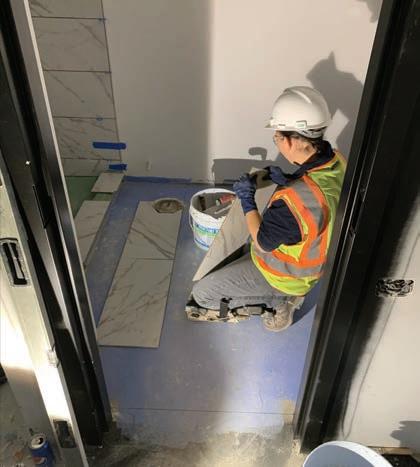
Fifteen BAC tile setters, tile finishers, or marble masons were on-hand any given day to keep the project moving. The scope of their responsibilities included the installation of 24-inch x 48-inch floor tiles, 20-foot media walls, large radius floors and various types of mosaic column work. The team worked in multiple areas throughout the project, assisting with monitoring material lead times, trade overlap and an accelerated schedule.
Rich Valenzuela, Journeyworker Tile Setter with BAC Local 3 CA, said that when he was tasked with overseeing the casino portion of the Sands Regency/J Resort, he wasn’t sure what to expect. Working in the renovation of an older structure, he knew there would be issues that would need to be resolved in the moment.
“The casino renovation had a lot of challenges from an uneven substrate standpoint,” Valenzuela recalled. “The older construction had to be tiled, which meant we had to navigate through the many different materials they had originally


team often found themselves in the midst of multiple onsite changes, performing everything from sourcing new tile, to taking part in additional work assignments.
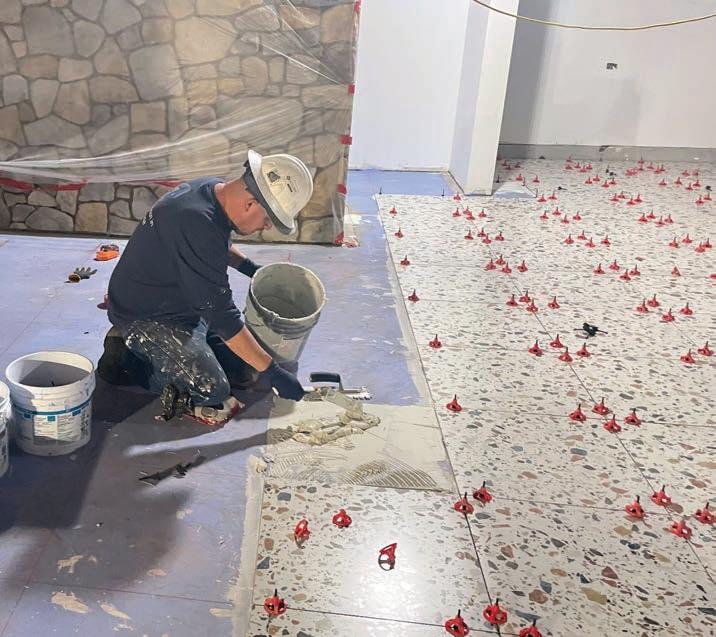
“The design was very much a work in progress,” Llerena said. “There were many changes that happened during the scope of my job.
used. This included mosaic, glass, and large format materials like gauged porcelain.”
Valenzuela says that despite the challenges, for him, working alongside members of BAC Local 13 Nevada was like being home. “We are a brotherhood. It really says a lot about what the BAC can do together… It is a powerful thing to see.
“One of the quotes I live by is, ‘quality trumps quantity,’” Valenzuela continued. “If you ever visit the newly transformed J Resort in Reno, you will definitely see what that quote means. The outstanding craftsmanship highlighted on this project from the BAC is a tribute to the skills and training of all our members.”
One of the twists during the job involved the heavy involvement of the Jacobs Entertainment team in the construction process. Local 13

Nevada Journeyworker Tile Setter Eddie Llerena, who served as foreman in Tower 2, said the project’s “design-build” approach kept everything fluid. In what were the equivalent of “fire drills,” the BAC
“There was one situation where we had to wrap up the work on the first three floors to hit a specific deadline,” he explained. “To make it happen, I had to pull all of our manpower together. For this section, we had to set the sinks underneath the countertops. It was an all-hands-on-deck

“The design was very much a work in progress…To get the job completed and hit the deadline they wanted, our team worked like a well-oiled machine.”
— Eddie Llerena, Local 13 Nevada Journeyworker Tile Setter
experience, with the finishers having to drop back and caulking all the edges of the sinks. To get the job completed and hit the deadline they wanted, our team worked like a well-oiled machine.”
Even with the project’s aggressive schedule, BAC workers met all of their quotas and deadlines, continuing to prove that we are the best hands in the business.
This crown-jewel project also gave BAC apprentices invaluable on-the-job experience on how and why everything gets done the way it does, including tasks like how to make mud, stock tile, and finish in the field.
“It was rewarding to see the progress [apprentices] made and just how much they were able to learn,” says Brandon Lopez Hernandez, BAC Local 13 Nevada Journeyworker Tile Setter, another
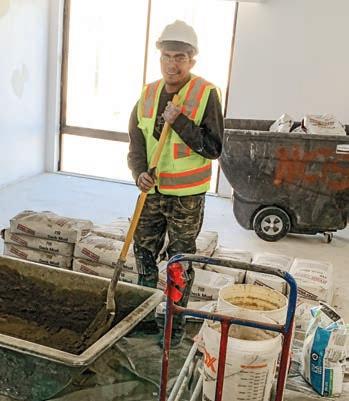
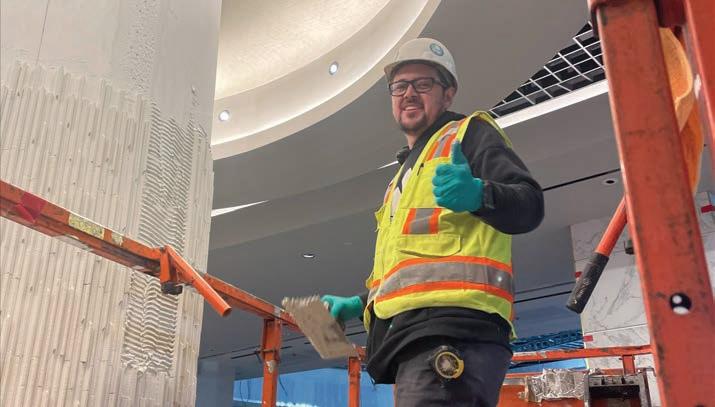

foreman on the project. “When BAC representatives came and met with all of us, we discussed how we could make things better on jobs like this moving forward.”
Lopez Hernandez says the conversation, along with the discussion about getting everyone involved raises for their work, was one of the best things he remembers
about the project. “I learned how to run a job. The experience I was able to get will make me a better foreman in the future.”
Some will be able to finish a majority of their apprenticeship at the Sands Regency / J Resort project, including Local 13 Nevada Apprentice Tile Setter Oscar Estupinan. “I have worked in the towers and in the casino on the project,” Estupinan said. “My jobs have included working on floating shower pans, and installing tiles, walls, floors and backsplashes. I also helped fabricate the countertops and tables in every room.”


Estupinan knows his career is young, but that memories of this project will always compete for his personal ‘best project of my career’ slot that every craftworker has in their head.
“Reno is a fast-growing area right now,” said Mountain West ADC Director Richard Crawford. “This gives BAC a great opportunity to grow and thrive. The Sands Regency / J Resort project is a clear example of the value of skilled, dedicated craftworkers getting the job done right, while growing our own skill base.” //
Dubbed “The Bellagio of Reno,” the recently renovated J Resort is a vital part of Reno, Nevada’s ongoing commitment to transform the city into a premier hotel-casino destination.
When completed, the $400-plus million, multi-phase project will create more than 2,000 jobs in the area. Below is a snapshot of the work BAC members helped put into the remodeling:
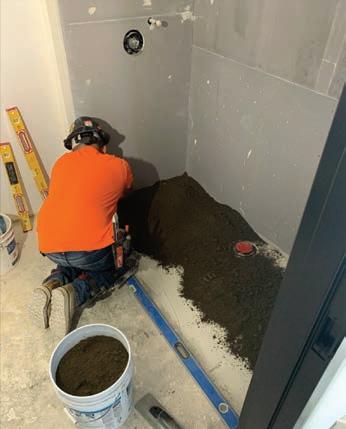
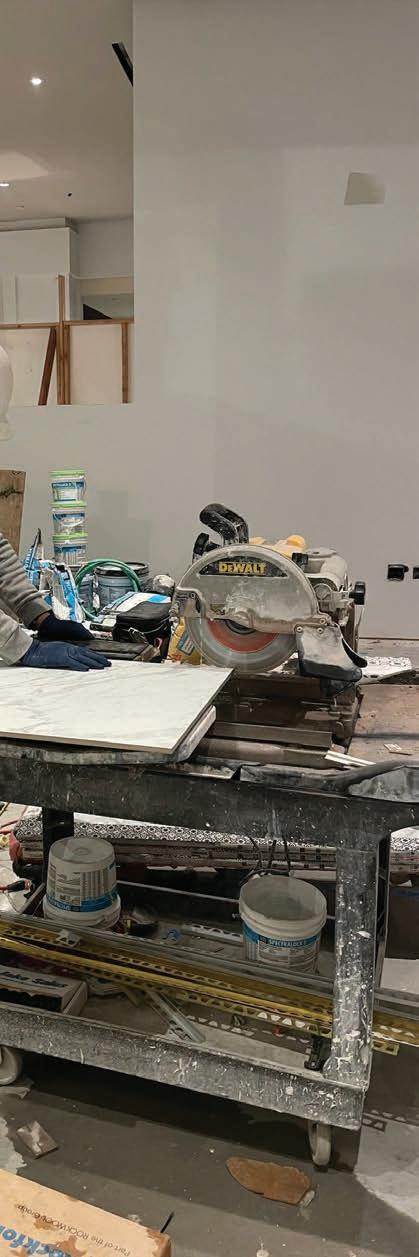
PHASE 1
+ A remodeled casino, including 600 new gaming positions

+ 1,000-plus surface parking spaces, featuring both valet and self-parking
+ Hanna’s Table — a new threemeal restaurant featuring a seasonal outdoor dining area
+ J Paul’s Italian Steakhouse
+ Afterglow Lounge
+ The Glow Plaza Festival Grounds, which will eventually feature a myriad of outdoor festivals and other special events
PHASE 2

+ A 400-position high ceiling extension of the gaming area
+ Vegas-style indoor showroom with 3,500 seats
+ Dinner theater with 400 seats
+ More than 1,200 additional guest rooms
+ More than 100,000 square feet of conference space
+ Rooftop indoor/outdoor swimming pool and spa
+ Sports-themed lounge

Union’s critical functions of benefits administration, collective bargaining, safety, and government relations.
Robert “Bob” Arnold, Secretary-Treasurer of the International Union of Bricklayers and Allied Craftworkers, retired e ective December 31, 2022, after serving three years as International BAC Secretary-Treasurer.
Prior to joining the BAC Executive Board, Arnold served as the National Director of Apprenticeship and Training for the International Masonry Training and Education Foundation (IMTEF) for eight years, and before that, as Director of the Illinois District Council Training Center. A proud member of BAC Local 21 Illinois, he began his career as a bricklayer in 1978.
“As Secretary-Treasurer, Bob’s responsive and commonsense approach has been essential to our
ability to continue to deliver the critical services that our members rely upon,” said President Tim Driscoll. “His sound reasoning and steadfast nature throughout the disruptions of the COVID-19 pandemic, which began almost immediately after he took o ce, has been invaluable.”
On January 1, 2023, President Driscoll appointed Executive Vice President Jeremiah “Jerry” Sullivan, Jr. to serve as Secretary-Treasurer of the International Union to fulfill Brother Arnold’s term.
Since joining the BAC Executive Board in 2020, Sullivan has overseen numerous programs including the International
Before joining the International Union Executive Board, he served as President of Local 1 New York for ten years, and as Secretary-Treasurer for the prior thirteen years. Brother Sullivan also served for over a decade on the IU Executive Council as Regional Vice President and as Trustee on the Board of the International Masonry Institute. He joined BAC in 1981 as a bricklayer.
“Jerry is a creative and determined trade unionist,” President Driscoll said. “He came to the IU Executive Board with a tremendous breadth and depth of experience, and his service since then has proven him to be a passionate and stalwart leader for all BAC members across the International Union. I am confident that he is the right leader to help our Executive Board steer BAC through the coming years.”
President Driscoll appointed Keith Hocevar to serve on the Executive Board as Executive Vice President to fulfill the term of Sullivan.
Hocevar, a 25-year member of BAC, joined the International Union sta in 2015 as a Regional Representative and advanced to Regional Director for the BAC North Central Region in 2017. Brother Hocevar previously served as an Executive Vice President of the BAC Ohio Kentucky Administrative District
Council and Field Representative for BAC Local 16 Ohio.
“Keith has proven to be a smart and strategic leader with tremendous energy,” said President Driscoll. “I look forward to working closely with him to continue to strengthen this union for future generations of BAC craftworkers.”
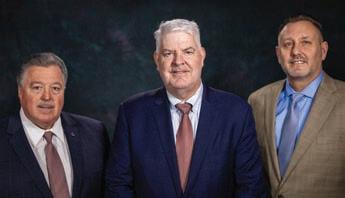
Growing the Unionized Masonry Industry was the theme of the BAC Executive Council’s February meeting in Miami Beach, FL. “To meet our goals for growth this year, we need to rededicate our e orts to organize the unorganized, both workers and contractors; enhance training for both apprentices and the newly organized; to engage the public on the benefits of union labor; and to
work actively with our industry partners to advance the role of our trades in an evolving construction industry,” President Tim Driscoll said during his opening remarks.
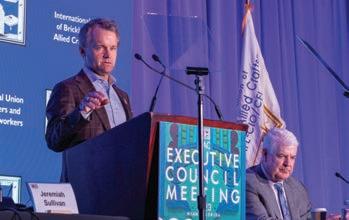
The BAC Executive Council members received updates from the IU departments and reports from each region. They also provided updates on their respective regions during roundtable discussions. An array of guest speakers
addressed the Executive Council, including Guy Cecil, Chairman of Priorities USA; former US Representative Tim Ryan; Matthew Karp, Associate Professor of History at Princeton University; Jon Callegher, Executive Director of Job Talks; and Canadian Minister of Labour Seamus O’Regan, Jr., gave a keynote address.
Minister O’Regan discussed the pro-worker accomplishments of the Trudeau government and the administration’s future agenda. “Across North America, trades workers build our homes, hospitals and schools,” he stressed. “Right now, we need them more than ever. It’s trades workers
“To meet our goals for growth this year, we need to rededicate our e orts to organize the unorganized, both workers and contractors...”
— President Tim Driscoll
like the International Union of Bricklayers and Allied Craftworkers that built the middle class and continue to do it every day,” remarked Minister O’Regan.
Retired IU Secretary-Treasurer Bob Arnold and former Local 8 Southeast President Glenn Kelly were recognized for their service to the union’s highest advisory body (Brother Kelly started a new role as
Southern Field Services Representative at North America’s Buildings Trades Unions). David Stupar, retired Executive Director of the International Pension Fund, was also recognized for his 45 years of service to the union.
The Labor-Management and Craft Committees convened to discuss ways to strengthen our industry and improve work


BAC apprentices proved their skill at the January 2023 World of Concrete Conference in Las Vegas, NV. The conference has apprentice contests every year, with competitions in first-, second- and third-year categories. BAC apprentices took home seven of the nine places in the competition. //
opportunities for both members and signatory contractors. Topics covered include the current economic landscape and outlook for the year, apprentice recruitment and retention, and a market research study that will help identify growth opportunities and leverage the International Masonry Institute’s influence to grow the union share of masonry and tile installation. //
BAC WINNERS WERE:
FIRST YEAR
1st Place: Melvin Marroquin — Local 2 Michigan
2nd Place: Connor Murphy — Local 5 Oklahoma / Texas / Arkansas
SECOND YEAR
1st Place: Ryan Newton — ADC of Eastern Missouri
2nd Place: John Synek — Local 2 New York / Vermont
3rd Place: Jacob Horton — Local 8 Southeast
THIRD YEAR
2nd Place: Garrick Manning — Local 23 Ohio / West Virginia / Kentucky
3rd Place: Douglas Stamper — Local 4 Indiana / Kentucky
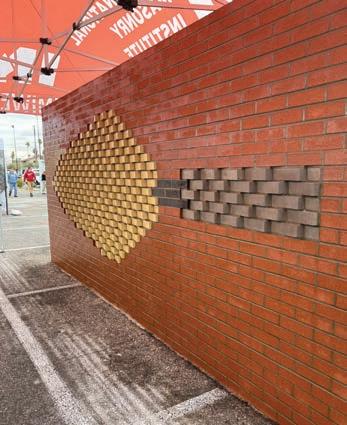
BAC General Counsel Bridget O’Connor retired on March 31, after over 20 years working for BAC. President Tim Driscoll selected Joyce Goldstein to succeed her.
O’Connor’s service with BAC began in 2002, serving as General Counsel to BAC and several of its related benefits funds since 2009. In addition to her formal role as BAC’s chief legal representative, O’Connor provided guidance and assistance to BAC sta in every department and provided support and education to BAC a liates across the International Union.
“Bridget has been a member of our BAC family, a trusted colleague, and a friend for over two decades,”
President Driscoll said when her retirement was announced. “We extend our best wishes to her and her family and wish her a long and healthy retirement.”
Joyce Goldstein has represented numerous unions in Ohio, including BAC a liates, for over 35 years. In 1986, she was the first woman in the United States to start her own law firm dedicated to the representation of unions and workers, with BAC Local 16 Ohio among her first clients. She has represented multiple BAC Ohio a liates including the Ohio Kentucky District Council and its predecessors.
Goldstein is a former board member of the Ohio State Bar
Association Labor and Employment Law Section, and the American Arbitration Association’s Labor Advisory Board; was inducted as a Fellow into the College of Labor and Employment Lawyers in 2010; and has been a member of the AFLCIO Union Lawyers Alliance since 1984, including multiple terms on its Board.
“Joyce has been fighting for BAC members for years, and I have seen her in action many times. Her energetic, smart, and strategic representation will be key as we continue to grow our union and provide the strong representation that our members expect and deserve,” remarked President Driscoll. //
BAC Director of Health and Safety Programs Liliana Calderon was a panelist at the North America’s Building Trades Unions (NABTU) Women in
Construction Week briefing at the US Capitol Building on March 8. The briefing focused on workforce programs and policy opportunities to increase recruitment and
retention of women in the construction industry.
Tradeswomen, labor leaders, members of Congress and Biden Administration officials
attended, including AFL-CIO President Liz Shuler, U.S. Department of Labor Women’s Bureau Director Wendy ChunHoon, NABTU President Sean McGarvey, and US Representatives Lori De Remer (OR-05) and Shontel Brown (OH-11).
The panelists discussed the progress and work on recruitment, their experiences in the trades, and how legislators and regulators in Washington, DC can make a di erence for the next generation of workers.
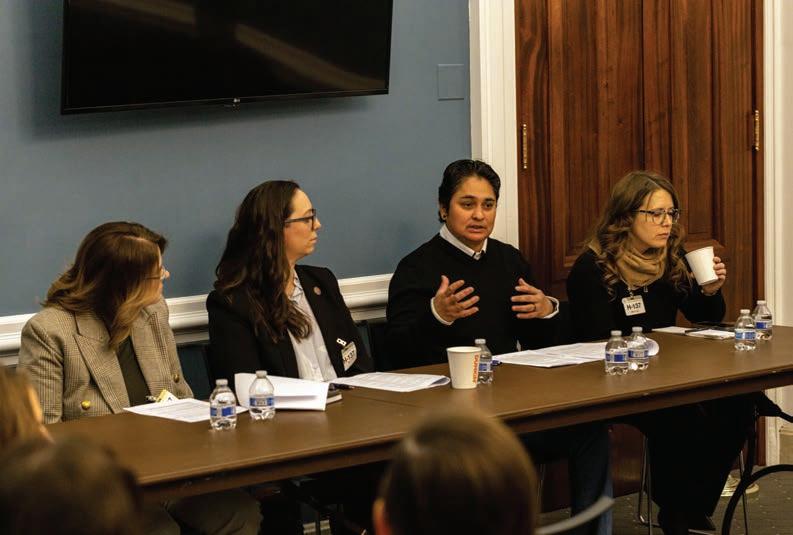
“The best recruiters of our industry are those tradeswomen who have thrived in their careers.
It is very important to share our stories,” Calderon emphasized. “How we got into the trades, how our lives have been impacted, and most of all our pride in our work,
our trade... When we think about recruitment, we should be looking at all avenues. We should be
recruiting all the time, wherever we are. Sharing our story, your story, with another woman.” //
The International Union is still accepting applications for the 2023 Canadian Bates Scholarship. Three students are selected annually. First place receives a stipend of $3,000 (CN), second place $2,500 (CN), and third place $2,000 (CN) per year for up to four consecutive years, providing the student maintains satisfactory academic progress.
To be eligible, students must be the child or stepchild of a Canadian BAC member in good standing of
a Canadian BAC Local, and a graduating high school senior who plans to attend college in the fall of 2023.
The application deadline is May 24, 2023 at 1 pm (EST). To learn more and apply online, visit the Education & Training section of bacweb.org, or scan the QR code. If you have questions about the Bates Scholarship, please call BAC’s Education O ce toll-free at 1-888-880-8222, ext. 3887, or email askbac@bacweb.org. //

For BAC Local 4 California member Victor Torres, joining the union was the shot he needed to fulfill his dream of economic security. “My family was poor… no college graduates or nothing. I had big dreams, but no bridge. I’m thinking, ‘how am I going to get there,’” he questioned. “All I needed was an opportunity, a chance, and I got that with the union.”
At a young age, Brother Torres needed a good job. “I was a father in high school, and I needed to provide. So, I asked my cousin, ‘can I get a job in construction,’” he said. “The foreman saw I was hustling, and I was hungry to learn. He said ‘I can’t teach you good here. There is no future for you here. But my friend is in the union, and they need apprentices.’”
Brother Torres immediately knew that bricklaying was for him. When he was an apprentice, he utilized every chance to learn more. “I loved my time as an apprentice,” Torres said. “I would have a lot of questions at work like ‘What’s this?’ ‘Why do we do that?’ or ‘How do I do this?’ or I would see some masonry on the drive home and wonder ‘How do they build that?’”
At work Torres found his coworkers did not have time on the job to answer all his questions,
“but at school, I would come with a list of questions — I’d write them down on my phone — and bombard my teacher, and he would answer everything and go into detail with me,” he said. “Learning how to properly use your tools and harness your skills was what was emphasized… that is what makes or breaks you — if you do good work or not. That is how you keep a job.”
Twenty-two year old Torres is now a foreman with Largo Concrete, a major Southern California mason contractor. “I used my apprenticeship time wisely, and I would ask about blueprints, leadership, and how to manage a crew. I learned that all at school,” he explained.

Torres is acutely aware of all of the benefits he now has as a union bricklayer that were not available working non-union, “Non-union you can work for a lot less; less safety, less breaks, less everything. I am secure; I have benefits and I have a rate,” he continued. “I have uncles still working non-union. They’re 55. They are saying how they should do something for retirement, but I am thinking it’s kind of late now. I have a retirement building already.”
As a BAC journey-level bricklayer, Torres is excited about the endless possibilities his career has. “There
is a ladder in the company, there is a ladder in the union. I could be a teacher later. I could be an organizer. I could go help people like others helped me.
“I could travel. I could work in Colorado as a journeyman bricklayer, Washington, or Hawaii. That’s another thing I think about, if I decide I want to move,” he said. “I can take my skills and join the union in another state. Even Canada if I wanted to.”
Before joining BAC, “I didn’t know what I was going to do with my life, and I didn’t know how I was going to take care of my family — and the union gave me all that. They gave me a future, and security for my family,” Torres said. “I kind of think someone is going to smack me and wake me up from this dream.” //
The 2022 midterm elections resulted in a divided US Congress, with Republicans gaining a slight majority in the House of Representatives and Democrats picking up a seat in the Senate. The new 118th Congress brings new leaders of the House and Senate committees that have jurisdiction over the National Labor Relations Board and the Department of Labor, creating again a challenging environment to get pro-labor legislation passed.
The new Chairwoman of the House Committee on Education and the Workforce, formerly named the Education and Labor Committee, is Virginia Foxx (R-NC-5). One of her first acts as Chair was to delete “Labor” from the Committee’s name, calling the word “Marxist.” “The Committee will no longer be a lackey for big labor,” she declared. Her elevation to Chair of the Committee promises to create a hostile space for labor unions and other worker organizations due to her extreme anti-union reputation, built on decades of opposing increased safety standards, the right to organize and collectively bargain, and against securing pension/ retirement benefits for workers.
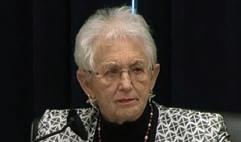
A recent tweet from the new Committee leadership provides a sign of what we can expect with respect to labor issues:
In this tweet, unions are accused — by the Committee that regulates them — of making “American companies less e cient, less profitable, and less competitive, and they cost American jobs.”
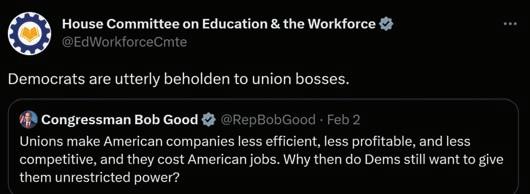
The Committee is likely to aggressively oppose all e orts to protect the rights of workers to organize unions and have a voice in the workplace, including passing the Protecting the Right to Organize (PRO) Act, and the Biden Administration’s e orts to protect workers’ rights through regulations which promote Project Labor Agreements and modernize the Davis-Bacon Act. The Committee already attempted to repeal a rule designed to protect the ability of union pensions to invest in construction projects that create union jobs.
The legislative climate will be much more laborfriendly in the Senate. Senator Bernie Sanders (I-VT) is the new Chairman of the Health, Education, Labor and Pensions (HELP) Committee. He replaces Senator Patty Murray (D-WA), who is now Chairwoman of the Appropriations Committee.
Senator Sanders is the lead sponsor of the PRO Act and he has demonstrated strong support for workers.
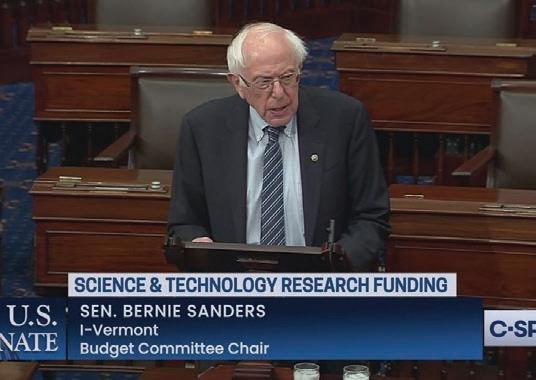
One of the first hearings the HELP Committee held was titled “Defending the Right of Workers to Organize Unions Free from Corporate Union Busting.” In addition, the HELP Committee is expected to hold hearings on the PRO Act and vote to send the legislation to the
floor to be considered by the full Senate. The Committee also subpoenaed the CEO of Starbucks to shine a light on their union busting tactics. Senator Sanders has repeatedly indicated that the Committee will make protecting workers’ rights a priority. //
President Biden’s actions and statements continue to show that the changes in Congress have not altered his firm alliance with unions and working families.
In the two years since President Joe Biden took o ce, his administration has spearheaded some of the most positive developments for working people since the 1930s New Deal. From the pension relief of the American Rescue Plan, to the strengthening of Davis-Bacon prevailing wage requirements, to the massive infrastructure investments of the 2021 Infrastructure Investment and Jobs Act and the 2022 Inflation Reduction Act, the Biden Administration has been committed to creating jobs and raising standards for working Americans. His State of the Union address on February 7 showed that he has no plans to stop.
During the speech, President Biden put unions and American workers front and center. “For too
long, workers have been getting sti ed,” he said. “Not anymore. We’re beginning to restore the dignity of work.
“I am so sick and tired of companies breaking the law by preventing workers from organizing,” President Biden continued, urging Congress to “pass the PRO Act, because all workers have a right to form a union.
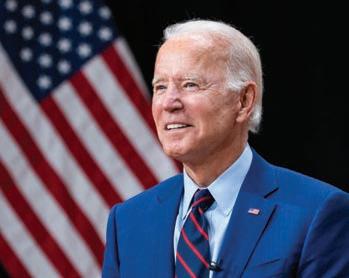
“And let’s guarantee all workers a living wage. Let’s also make sure working parents can a ord to raise a family with sick days, paid family and medical leave, and a ordable childcare, that will enable millions more people to go to work,” President Biden stressed. “When we do all of these things, we increase productivity. We increase economic growth.”
President Biden also highlighted the importance for the government to ‘Buy American.’ “Buy American has been the law of the land since 1933. But for too long, past administrations have found ways to get
around it. Not anymore,” he said. “Tonight, I’m also announcing new standards to require all construction materials used in federal infrastructure projects to be made in America.”
Since taking o ce, President Biden worked with Congress to pass key legislation that invests in worker communities:
+ The American Rescue Plan protects pensions for millions of retirees, including BAC members.
+ The Infrastructure Investment and Jobs Act of 2021 will address the nation’s crumbling
roads and bridges and invest in airports, railways, and other necessary improvements; all while requiring the vast majority of contractors pay the prevailing rate for the region, supporting the workers and the local communities.
+ The Inflation Reduction Act includes strong labor protections, including $300 billion in tax credits to help ensure workers on clean energy
projects receive fair wages and benefits and that apprenticeship programs play a crucial role on renewable sector jobsites. These tax credits make it a major incentive for contractors to pay their workers the prevailing, union rate.
On top of these achievements, unemployment is now at the lowest percentage in over half a century.
“President Biden continues to prove he is the most pro-labor
President in recent history,” said BAC President Tim Driscoll. “He does not shy away from labor issues, and seeks to ease workers’ struggles. No matter his audience, he consistently proclaims that unions are the best way to ensure fair wages, and safe jobsites. We look forward to continuing to work with him to pass, among other things, the PRO Act and Reopen and Rebuild America’s Schools Act.” //
In early 2023, dedicated unionist and Secretary of the Department of Labor Marty Walsh left his position to be the Executive Director of the National Hockey League Players Association (NHLPA). In March, President Biden nominated the Department’s Deputy Secretary, Julie Su, to succeed him; a strong choice to continue the Department’s focus on empowering and protecting American workers.
Su has proven herself in California and in Washington, DC to be a fierce ally for working people.
When serving as California’s Labor Secretary, she fought against misclassification of workers and wage theft. Policies that she put in place had an immediate impact on construction workers across the state.
Su is not afraid to use all avenues in the law to crack down on corporate greed and worker exploitation.
Since coming to the federal stage, Su continues to prove she is the right person for the job, taking a key role with the Department’s Good Jobs Initiative.
“Deputy Secretary Su will aptly fill the vacancy left by Secretary Marty Walsh. Her dedication to working families, and the labor movement, is clear,” said BAC President Tim Driscoll. “We call on the Senate to swiftly confirm her in this new role and look forward to working with her in the future.” //
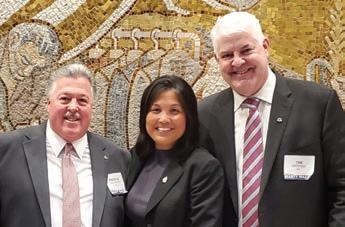
Since our founding, the International Union of Bricklayers and Allied Craftworkers (BAC) has been dedicated to ensuring that all workers engaged in the trades that we represent receive the fair wages, benefits, safe working conditions, and the respect and dignity that their labor demands. Exploitation of workers in the construction industry is widespread, and all too often the most exploited are immigrants lacking proper work authorizations. Low-road contractors who profit from abusing such workers are a scourge on society.
On January 13, the Biden Administration provided BAC, and all of organized labor, a new tool to take on these unscrupulous employers. The new Department of Homeland Security (DHS) policy on deferred action announced by Secretary Alejandro Mayorkas provides a path for immigrant workers to stand up to corrupt contractors, expose the shadow economy in which these bad actors thrive, and obtain work authorizations that will a ord them the workplace protections that all workers seek.
When immigrant workers have meaningful relief from employer
intimidation, their ability to organize, join unions, and raise standards within the industry is a powerful force.
This is not a new challenge for BAC. We are a union whose establishment, growth, and continued success has always relied upon our ability to attract and integrate successive generations of immigrant workers. BAC stands ready to assist the workers unshackled by the new policy achieve the benefits that working in the organized sector of our industry represents. Together, we will strengthen the voice of workers in America. //
On February 28, the Richard L. Trumka Protecting the Right to Organize Act (PRO Act), H.R. 20 was reintroduced into Congress. BAC commends pro-worker leaders on Capitol Hill who are making this vital worker legislation a priority during the 118th Congress, including ranking House Minority Leader Hakeem Je ries (D-NY), Senate Majority Leader Chuck Schumer (D-NY), Senate Appropriations Committee Chair Patty Murray (D-WA), Senate HELP Committee Chair Bernie Sanders (I-VT),
Congressmembers Bobby Scott (D-VA) and Brian Fitzpatrick (R-PA).
BAC is proud of our partnership with our signatory employers across the United States to provide vital building and construction services to the communities we live in. However, our members, and just as importantly the contractors that hire them, are forced to compete with unscrupulous developers and employers that take advantage of the lack of legal protections for workers in the United States, and
minimal enforcement ability for the laws that are in place. These employers intentionally violate the law because penalties are so weak low-road employers simply view them as a minor cost of doing business. The PRO Act strengthens penalties for such behavior to deter employers from interfering with workers’ rights.
The PRO Act also addresses:

+ Misclassification of employees — a practice that runs rampant in the construction industry. Changing the definition of “employee” under the National Labor Relations Act (NLRA) will significantly pressure employers to stop gaming the system and incorrectly categorize an employee as an “independent contractor” or “supervisor.” The legislation will ensure workers are able to properly exercise their rights and get the pay and benefits they deserve, while putting revenue back into local communities by stopping employer tax evasion.
+ Limitations on secondary picketing and strikes, as well as limitations on recognitional picketing. This will allow union brothers and sisters to exercise their First Amendment right to stand in solidarity with fellow construction workers fighting for their own rights and benefits at the same jobsite.
“Our economy is out of balance, and it is time for Congress to step up to protect working class families, and restore economic stability,” said BAC President Tim Driscoll. “We urge all members of Congress to
support the PRO Act and put the US economy back on track for all Americans.”
Scan the QR code to read more about how the PRO Act will benefit BAC members. //

Working people in Michigan had a great victory in March with passage of The
Restoring Workers’ Rights package, repealing the state’s decade-old public and private
sector right-to-work laws and restoring prevailing wage requirements.
Since Michigan’s “right-towork” law passed in 2012, the state’s unionization rates have declined faster than the nation’s rates, and the state’s relative average wage plummeted. The law has had a devastating e ect on unionization, worker pay and benefits, and the middle class.
The anti-union climate in the state is changing, however, with new pro-worker majorities in the state legislature taking direct steps to undo the damage from a decade ago, and empowering working people in Michigan.

On March 15, the Senate passed legislation repealing the state’s private sector right-to-work law (SB 34).
The Restoring Workers’ Rights package also includes SB 6, which the Senate passed on March 14. The bill would reinstate Michigan’s prevailing wage law and require
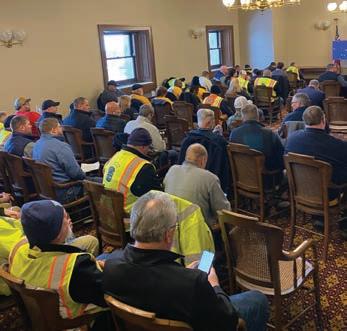
workers to be paid the prevailing wage and fringe benefits on state projects.
After the Michigan House voted for all private-sector right to work repeal and prevailing wage reinstatement, Gov. Gretchen Whitmer (D) signed the entire Restoring Workers’ Rights package into law on March 24. “These bills will protect health and safety,” Gov. Whitmer said in a statement. “Construction workers can speak up when there’s a safety issue and employees can call attention to... other problems. Let’s continue delivering for working people and ensuring Michigan is open for business.”
“We told our members that if they voted for pro-worker candidates, that those candidates would make this state work for workers again by repealing the
anti-labor laws passed when the right-wing had control,” said Local 2 Michigan President Paul Dunford. “Once in o ce, we made sure the legislators did not forget why they were there, and they set to work right away fixing the damage. We are proud to again be in a state that values workers and organized labor.” //
The Occupational Safety and Health Administration (OSHA) released its list of the most frequently cited safety standards violations for 2022. The annual list, based on worksite inspections, aims to alert employers, safety professionals, and workers about common violations to help prevent them.
For the 12th year in a row “Fall Protection — General Requirements” found itself at number one for OSHA’s most cited standard. OSHA’s top 10 citations are:
1.Fall Protection — 5,980 citations
2.Hazard Communication — 2,682 citations
3.Ladders — 2,471 citations
4.Respiration Protection — 2,430 citations
5.Scaffolding — 2,285 citations
6.Lockout/Tagout — 2,175 citations
7.Powered Industrial Trucks — 1,922 citations
8.Fall Protection-Training Requirements — 1,778 citations
9.Personal Protective and Lifesaving Equipment-Eye and Face Protection — 1,582 citations
10.Machine Guarding — 1,488 citations
“These violations can be abated with proper training and hazard awareness training, as well as by working with your local OSHA Area Directors and Regional Liaisons to better understand what goes on during investigations and during inspections,” BAC Safety and Health Director Liliana Calderon said. “Developing these relationships help our members and signatory contractors work safer.”
The BAC Health and Safety Department hosted a webinar on March 30 discussing the hazards and how to abate them. Scan the QR code above to watch the webinar on the BAC Safety and Health website. //
National Ladder Safety Month, observed in March and spearheaded by the American Ladder Institute (ALI), raised awareness of ladder safety at home and work. ALI’s goal is to decrease the number of ladder-related injuries and fatalities, and increase the number of people certified in ladder safety training. Each year, tens of thousands of injuries, and hundreds of deaths, are caused by ladder misuse. By providing critical guidelines and raising awareness on safe use, we can help decrease these numbers.
The 2023 National Ladder Safety Month focused on choosing your ladder, as well as safety before the first step (inspection and set up), while climbing, and at the top.
To access ladder safety resources, including a webinar series, please visit https://tinyurl.com/bdfcyb3w.
BAC members can also earn their Ladder Safety Certificate through ALI’s ladder safety training modules at https://www.laddersafetytraining.org/ or scanning the QR code. //


This new section will provide union contractors — and those who are interested in becoming union contractors — with important, up-to-date health and safety information and resources.

The Center for Construction Research and Training’s (CPWR) Best Built Plans program is a planning tool for contractors that identifies actions to take, and provides free resources to use, at each project stage to implement safe materials handling practices.

The approach follows the hierarchy of controls for reducing the risks for injuries associated with manually lifting and moving materials, from the most effective approaches for risk reduction at the top of the inverted triangle to the least effective for risk reduction at the bottom.


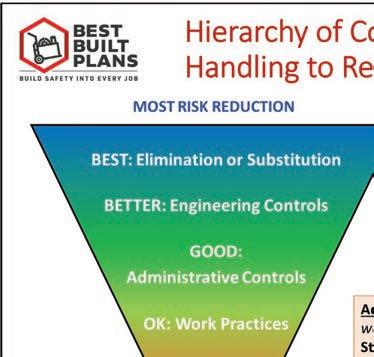
While it’s best to begin safe materials implementation when bidding on a project to ensure the equipment and resources needed to work safely are in your budget, controls can be utilized at any stage of the project. The Site Planning Tool includes worksheets to help calculate the cost of using safe materials handling practices, checklists to use on the job, and training programs and educational materials to use with workers and management. To access these materials, visit https://tinyurl.com/5n7s8nu2 or scan the QR code.
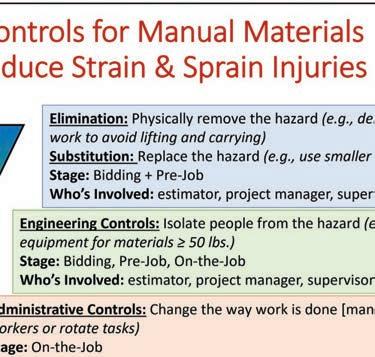
With the start of the new year, the BAC/IMI International Training Center welcomed hundreds of BAC members determined to continue their education and advance their careers. Classes this winter ranged from refractory to historic masonry preservation, welding, and more, giving students from across the country the opportunity to upgrade their skills in di erent aspects of their trade.
Mayhugh signed up for the course at the encouragement of the safety director at his company, BAC signatory contractor Heimbrock Inc. The company “told me it would open more doors for me. I jumped at the opportunity,” he explained.

Instructor Worthen shared with the students how lucrative a career in the refractory industry can be, and the opportunities it presents for travel. “Having this skill set in addition to your main craft allows you to get outside of your local and find work with more hours. Plus, the money is great,” he said. “I’ve never believed in being a one trick pony. Having your hands in multiple pots is what has kept my career going for almost fifty years.”
Abbey Formica of BAC Local 5 Pennsylvania shares Worthen’s philosophy on continuing to learn to be more marketable. She’s always looking for new ways to diversify her skill set and her employability. Formica recently
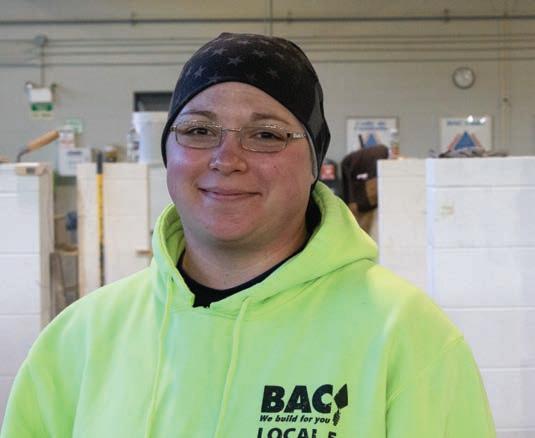
In February, refractory instructors Corey Worthen and James Zubel welcomed a group of students eager to learn the specialized craft.
James Mayhugh, a bricklayer from BAC Local 4 Indiana/Kentucky, is one such student. Mayhugh’s passion for his career is driven by his dedication to support his family. “Everyone who knows me knows I do everything I can for my children,” he said “I want to be able to give them everything I lacked as a child.”
joined a bustling welding class led by instructor Kay Whigan. “Throughout my fifteen-year career, I’ve crosstrained in PCC, terrazzo, tile, and brick. I’ve had my eye on Kay’s welding class for a while,” she said.
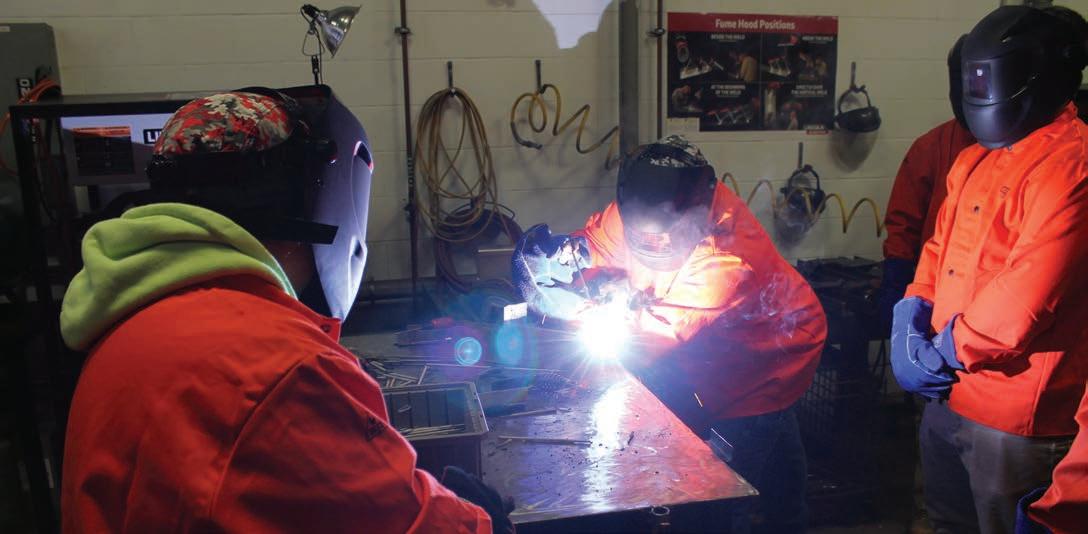
The key to a successful career, according to Formica? Curiosity. “There’s always something new to be learned. Thankfully, our union provides us with opportunities to be wildly curious. I’m grateful to be able to come to the International Training Center to explore those curiosities.”
The International Training Center’s welding class consistently remains in high demand amongst BAC craftworkers. “As an instructor, my students are trusting that I’ll give them the tools that they need to have a great career,” shared International Training Center instructor Kay Whigan as he prepared to do a demonstration for his class. “I haven’t let anyone down yet!” Students who take the course have the opportunity to earn their welding certification, a credential that can help make them more desired by employers.
Across the training floor, students taking IMI’s popular Historic Masonry Preservation Certificate Program (HMPC) practiced stone patching and carving techniques – just a sampling of the critical restoration skills covered during the weeklong class.
Casey Weisdock, IMI Director of Industry Development and Technical Services, and Pete Kohl, IMTEF
National Training Center Coordinator, led a very diverse group of students through the course. “Our classes are always full of determined people who genuinely love the craft,” said Kohl.
James Mayse, PCC instructor from BAC Local 3 California, continues to set an example on the importance of continuing education by signing up for the class. “I joined the BAC in 1984. The union has given so much to me that I wanted to give back by coming here, learning more about historic preservation, and taking the knowledge back to my local,” he said.
For Clifton Bradshaw, a third-year PCC apprentice from BAC Local 3 New York, taking HMPC represented an important next step in mastering his craft.
“It’s important for me to know the ins and outs of my trade, including how to preserve the masonry buildings we work on.” Bradshaw credited the instructors he’s had throughout his career thus far for helping him advance his skills. “Belonging to this union means we’ll always have that support to succeed,” he said.
Weisdock explained the value of this training for BAC craftworkers performing restoration work. “The content provides critical insight into the bigger picture of why we treat historical masonry buildings and sites di erently than other types of existing buildings. The program elevates the craftworkers’ skills and raises the bar for masonry restoration.” HMPC, like many other IMI certificate and upgrade training programs, frequently shows up in project specifications, giving
BAC signatory contractors a leg up in bidding and winning the work.

Advanced and specialty classes like HMPC, welding, and refractory are a big part of what makes BAC members the best hands in the business. Mayhugh, Formica, Mayse, Bradshaw, and their classmates enjoyed a morale boost when BAC President Tim Driscoll and Secretary-Treasurer Jerry Sullivan paid a visit to the training center in recognition of their dedication to the craft.
“When I was younger, I didn’t realize all the opportunities at my disposal here at the International Training Center,” said Mayse. “Meeting Tim and Jerry today made we wish I started coming here every year at the start of my career!” //
Over the last five years, eight of the largest wildfires in California’s history have burned 1.8 million hectares, destroyed over 8,500 structures, and led to countless deaths. BAC Local 3 California President Troy Garland was tired of watching the wildfires devastate so many communities throughout the state, tragically ending lives and destroying critical structures. So
he decided to get involved in state politics to enact legislation and policies that recognize fire-resistant masonry materials’ ability to help protect public health and safety.
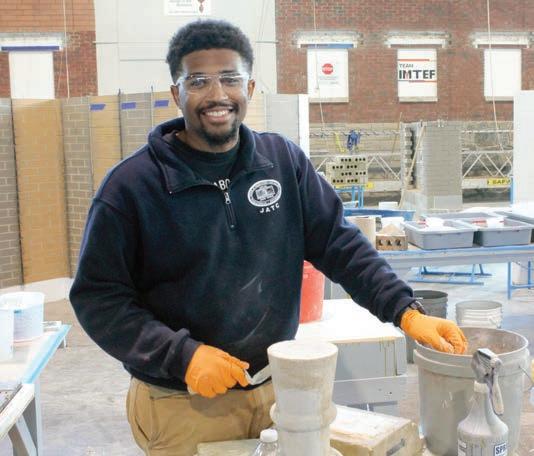
Before BAC and IMI got involved, very little was done to ensure that building materials met the standards necessary to withstand prolonged exposure to fire. Fire resiliency is particularly
critical in areas of transition between wilderness and developed land. Within those regions, fire hazard severity zones can be classified as “moderate,” “high” or “very high.” These are the areas where Brother Garland knew that BAC could make a di erence.
To support his e orts, Garland called on IMI Director of Industry Development and Technical
Services Sunup Mathew. Mathew helped develop technical information and support for the case for building with non-combustible materials like masonry. Drawing on code requirements for buildings at risk of destruction from other natural disasters — like earthquakes, hurricanes, and tornadoes — IMI was able to show that buildings in wildfire-prone areas should be built with greater fire resilience. Building critical infrastructure like hospitals, schools, emergency services facilities, and government buildings with higher fire ratings is key, so communities can continue operating and serving residents even in the face of disaster, which is becoming more regular each year.

With the help of a lobbying firm and technical resources from IMI, BAC Local 3 California drafted text for a bill that was sponsored by Democratic California Assembly member Jim Wood. Wood represents an area of Northern California impacted by some of the state’s largest wildfires, and was a natural fit to sponsor the bill, known as AB 2322.
After concerted e ort by BAC Local 3 California to garner support for the bill, and testimony before several committees in the California Assembly — who vetted the bill before sending it to the California House and Senate
floors — the bill unanimously passed both floors and was signed into law by Governor Gavin Newsom in September 2022.
“This new law will have a lasting impact to protect Californians and our communities from the e ects of wildfires,” said Garland. “We will continue working with IMI to ensure decision
makers recognize CMU and other masonry products are the best means to meet the fire ratings for compliance with the building code. Local 3 craftworkers are ready to construct essential buildings that serve our families to withstand the damage of wildfires and other disasters caused by climate change.” //

The Board of Trustees of the Bricklayers and Trowel Trades International Pension Fund (IPF) appointed Lester Kau man, President of BAC Local 5 Pennsylvania, to serve as Executive Director of the International Pension Fund beginning March 1, 2023. He also serves as Executive Director of IPF Canada, and of the BAC Save Retirement Savings and 401 (k) Plans.
Stupar, a member of BAC Local 2 Michigan, served in various capacities for nearly every BAC-related fund at the International Union level for an impressive 45 years. He held a variety of leadership positions, including Executive Director of the International Health Fund (US and Canada), and the LOEPF (US and Canada). He retired after serving as IPF Executive Director for 30 years.
“Under Dave’s stewardship the BAC Benefit Funds have experienced significant growth while continuing to provide superior service to BAC members across the US and Canada,” said President Tim Driscoll. “On behalf of the IU, I thank Dave for his decades of service to BAC members and their families.”
Lester Kau man served as President of BAC Local 5 Pennsylvania for 17 years, and as a local field representative for six years before that. He brings a wealth of benefits experience to the IPF Executive Director position, having served on, and chaired, several local benefit plans during his 35-year career with BAC. Additionally, at the International level, Kauman served on the LOEPF Advisory Committee and the International Healthcare Task Force.
“Throughout his career with BAC Local 5 PA, Les has demonstrated a keen understanding of the important role that benefits play in attracting and retaining the skilled craftworkers that our industry relies on,” said Gregory Hess, IPF Co-Chair, Secretary-Treasurer of the International Council of Employers of Bricklayers and Allied Craftworkers, and President and CEO of Caretti Inc. “He is ideally suited to further strengthen the International benefit programs that he will oversee.”
IPF recently celebrated its 50th anniversary and is approaching the milestone of having paid out over $4 billion in benefits to retired BAC members. //
To answer your question faster when contacting the International Pension Fund, please use the email addresses below, separated by topic:
IPFPensionapplicantinfo@ipfweb.org
+ File a pension application
+ Updates to the status of applications that have been filed
+ Provide information/documentation that is required to complete the processing of the application
PensionEstimate@ipfweb.org
+ Request a formal estimate of IPF retirement benefits
+ Request a list of hours reported on their behalf by participating employers
+ Request an application for retirement
+ Pre-retirement death/survivor benefits inquiries
+ Any pre-retirement inquiries
PensionPayroll@ipfweb.org
+ Request pension verification or award letter
+ Request or submit a direct deposit form
+ Report the death of a pensioner
+ Request a copy of a 1099-R form or T-4A form (Canada)
+ Inquire regarding the option chosen at retirement and benefit amount
To contact the BACSave International Retirement Savings Plan (Annuity) or 401k Plan email RSPwithdrawal applicantinfo@ipfweb.org
+ Request an application for withdrawal
+ File an application for withdrawal
+ Provide information to complete the application process
You can also contact the International Pension Fund office via the toll-free number at 1-888-880-8222.
As we begin 2023, it is imperative to remember the importance of preventive care services. Preventive care can help you avoid potentially serious health conditions and/or obtain early diagnosis and treatment. Generally, the sooner your doctor can identify and treat a medical condition, the better the outcome.
Most health plans, including the United Healthcare and Geisinger plans o ered through the International Health Fund (IHF) provide 100% coverage for preventive health care services, without any cost to IHF participants. The IHF also includes coverage of all generic preventive medications recommended by the United States Preventive Services Task Force (USPSTF) at no cost. To receive 100% coverage for services, members just need to receive preventive care services from an in-network provider. The IHF health plans also fully cover lab services (preventive and non-preventive) at Quest and LabCorp, and diagnostic imaging services at freestanding facilities.
Preventive care services recommendations vary based on age. For children, some recommendations include age-appropriate well-child examinations, hearing screening, vaccines and immunizations, and vision screening. For adults, recommendations may
include wellness examinations, blood pressure screening at every wellness exam, cholesterol and diabetes screenings, colorectal cancer screening for adults age 45–75 years old, mammography screening, cervical cancer screening for women age 21–65 years old, as well as vaccines and immunizations.
Lung cancer screening is another important no-cost preventive care screening. This screening is recommended for individuals aged 50–80 years old with at least a 20-pack year smoking history. A 20-pack year is defined as smoking one pack per day for the last 20
years, or two packs per day for the last 10 years.
All preventive care screenings, including but not limited to those above, can help to identify any health issues before they become more serious.
To learn more about what preventive care screenings are recommended for you, you can visit: www.uhc.com/health-and-wellness/ preventive-care. With this site you can generate a checklist of recommended screenings that can then be discussed with your provider to determine what is appropriate for you. //
IHF participants have a host of resources available to them via the myUHC website. Members can register for their personalized website online at myuhc.com® as well as download the UnitedHealthcare® app. These digital tools are designed to help members understand their benefits and make informed health decisions. These tools include providing wellness and preventive screening recommendations, and also include:
+ Find care and comparing costs for services from in-network providers.
+ Get access to care from anywhere with Virtual Visits. With Virtual Visits a doctor can diagnose common conditions by phone or video 24/7. Virtual visits are covered under all IHF plans with a $5 copay.
+ Locate freestanding facilities to take advantage of the IHF’s 100% coverage of diagnostic imaging services and outpatient surgery benefits.
+ Find tailored recommendations regarding providers, products and services.
+ Access claim details and health plan ID card.
For more information, plan participants can contact the Fund Office at 1-888-880-8222.
Canada’s Building Trades Unions (CBTU), the national voice of over half a million Canadian construction workers, submitted recommendations to the government’s consultation process on labour conditions for clean tech and clean hydrogen investment tax credits.
These recommendations minimize the negative effects the green technologies have on workers, communities, and the economy, ensuring that workers are kept at the forefront of the transition to net-zero. They include:
+ Prevailing wage be determined using the total wage package, including pensions and benefits through collective bargaining agreements and/or union project labour agreements.
+ Strengthened tax credits keep Canada competitive with US tax credits, which are increased by five times when prevailing wage and apprenticeship requirements are met. CBTU recommends increasing the
Investment Tax Credit for Clean Technologies up to a maximum of 40% and increasing the Investment Tax Credit for Clean Hydrogen up to a 50% maximum if good labour conditions are met.
+ The following apprenticeship and diversity requirements: the overall apprenticeship hours to journeyperson hours be 25% for all worker hours averaged over a project, and a minimum of 10% of all hours worked be performed by underrepresented groups (Indigenous peoples, women, Black Canadians, and other people of colour) and veterans.
“CBTU’s recommendations would grow and diversify the construction industry while promoting green, sustainable infrastructure,” said BAC Canada Regional Director Craig Strudwick. “Setting prevailing wage, apprenticeship, and diversity requirements to qualify for clean investment tax credits will raise the bar for all construction projects, and workers aren’t left behind as Canada advances to net-zero.”
Les Syndicats des métiers de la construction du Canada, la voix nationale de plus d’un demimillion de travailleurs canadiens de la construction, ont soumis des recommandations dans le cadre du processus de consultation du gouvernement du Canada sur les conditions de travail nécessaires pour l’obtention des crédits d’impôt à l’investissement pour les technologies propres et l’hydrogène propre.
Ces recommandations minimisent les effets négatifs des technologies vertes sur les travailleurs, les communautés et l’économie, en veillant à ce que les travailleurs restent à l’avant-garde de la transition vers la carboneutralité. Voici les suggestions en question :
+ Le salaire courant devrait être déterminé sur la base du total de la rémunération sous toutes ses formes, y compris les pensions et les avantages sociaux, par le biais de conventions collectives ou d’accords syndicaux applicables à un projet.
+ Le renforcement des crédits d’impôt permet au Canada de rester concurrentiel par rapport aux crédits d’impôt américains, qui sont multipliés par cinq en cas de respect des exigences en matière de salaire courant et d’apprentissage. Les Syndicats des métiers de la construction du Canada recommandent donc d’augmenter le crédit d’impôt à l’investissement pour les technologies
propres jusqu’à un maximum de 40 % et d’augmenter le crédit d’impôt à l’investissement pour l’hydrogène propre jusqu’à un maximum de 50 % si de bonnes conditions de travail sont réunies.
+ Il importe d’appliquer les exigences suivantes en matière d’apprentissage et de diversité : le nombre total d’heures d’apprentissage par rapport aux heures de compagnonnage devrait être de 25 % pour toutes les heures de travail calculées en moyenne sur un projet, et un minimum de 10 % de toutes les heures travaillées devrait être effectué par des groupes sous-représentés (peuples autochtones, femmes, Canadiens noirs et autres personnes de couleur) et des vétérans.
« Les recommandations des Syndicats des métiers de la construction du Canada permettraient de favoriser l’accroissement et la diversification de l’industrie de la construction tout en faisant la promotion d’une infrastructure verte et durable, a déclaré Craig Strudwick, directeur régional du BAC Canada. L’établissement d’exigences en matière de salaire courant, d’apprentissage et de diversité pour être admissible aux crédits d’impôt à l’investissement pour les technologies propres et l’hydrogène propre relèvera la barre pour tous les projets de construction et ainsi les travailleurs ne seront pas laissés pour compte alors que le Canada progresse vers la carboneutralité. » //
Quality of life — the perceived standard of health, comfort, and happiness experienced by an individual — is a concept with many dimensions. This perception is evaluated within the context of a person’s value systems, beliefs, and goals. There is a large overlap between quality of life and life satisfaction, which is important to the BAC.
The New Year tends to encourage reflection and inspires enthusiasm around self-improvement, and in consideration that January was International Quality of Life Month, it is important to continue the conversation around overall well-being and what goes into it. In 2021, 76% of workers in the United States reported at least one symptom of a mental health condition — a 17% increase from just two years prior. This data drove the U.S. Surgeon General to release a new framework for employee mental health in October 2022.
In their formal assessment, the World Health Organization defined 24 indicators, subsequently grouped into six larger domains, meant to help measure a person’s quality of life. Those domains include the following (with corresponding indicators):
+ Physical — pain and discomfort, energy and fatigue, and sleep and rest
+ Psychological — positive feelings, negative feelings, self-esteem, thinking, learning, memory and concentration
+ Independence — mobility and working capacities
+ Social relationships — personal relationship quality and social support
+ Environment — physical safety and security, home environment, financial resources, availability and quality of health and social care, and opportunities for and participation in recreation and leisure
+ Belief systems — religious, spiritual and/or personal beliefs
While not a comprehensive list, additional quality of life indicators addressed by other published assessments and scales have included activities related to helping or encouraging other people, creativity and personal expression, sense of burden, and general impairment.
One reason that there is no single comprehensive or exhaustive list of quality-of-life indicators is because the term itself is personally and individually meaningful. In other words, quality of life is as much defined by you, the individual, as it is by scholars or researchers. What is personally meaningful and impactful to and for you, and your ability to cultivate or ascertain these attributes in your own life, will influence the degree to which you will report experiencing a satisfactory quality of life.
It is important to address your quality of life directly and explicitly, and increase clarity around factors that influence your quality of life (both objectively and subjectively). BAC MAP will continue to pursue the fulfillment of our mission to support BAC members in having the greatest possible overall sense of well-being.
If you or a loved one needs help or would like more information about how to achieve a better quality of life, please call MAP for free, confidential support at 1-833-MAP-TALK, Monday through Friday 8 a.m. to 7 p.m. EST. //
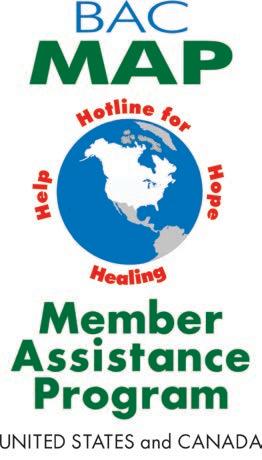



































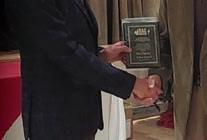



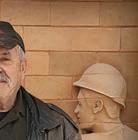






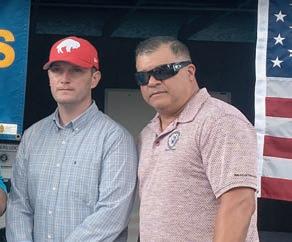
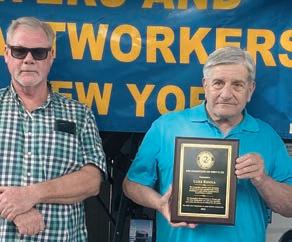





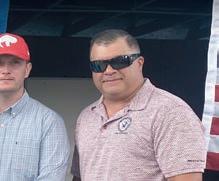

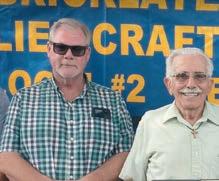





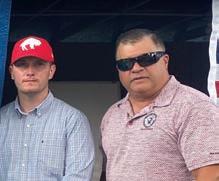

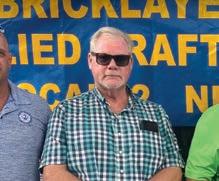
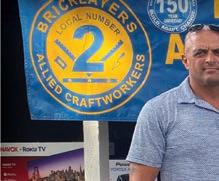






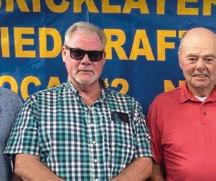























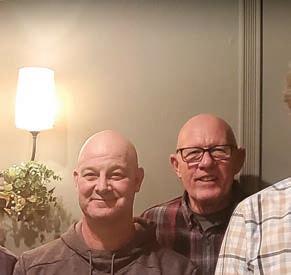
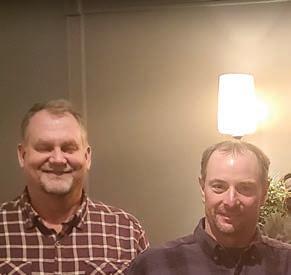

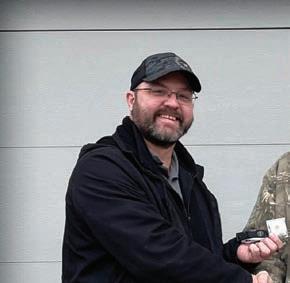

















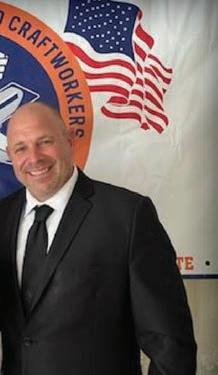





Klupp,George-21,ILB9262
Kuckie,BrianL.-21,ILB6846
Lagana,Salvatore-03,CATL9458
Lane,Wesley-05,NJ/DE/PAB8456
Laplante,JosephT.-01,MN/ND/SDB6646
Lawrence,DarronL.-01,MOPC,CM8461
Maas,Peter-04,NJB,CM,P9471
Maher,JamesA.-03,MA/ME/NH/RIB,CH,CM,PC8063
McDonald,Jr.,GeorgeA.-03,MA/ME/NH/RICM,TL,B7636
Metz,AlbertF.-01,MN/ND/SDB9063
Meyer,RichardF.-01,MN/ND/SDCB8256
Mitchell,Donald-01,NSB,M8160
Mule,Salvatore-02,NY/VTB,M7854
Nelson,EddieD.-01,MN/ND/SDB6345
Nelson,Tony-03,CATL8860
Odom,Sr.,Harold-01,NYB9472
Adamitis,JosephS.-02,NY/VTB,CM,CS,M6340
Andrews,EarlE.-05,PAB8454
Artuso,ArmandW.-21,ILB7648
Benevento,PaulJ.-05,NJ/DE/PAB,CM,P7839
Buck,MichaelJ.-05,PAPC,CM5030
Burkett,DavidR.-04,IN/KYB8755
Carroll,JamesD.-01,MN/ND/SDB8766
Chambers,Dexter-04,IN/KYB8862
Cicalese,Jr.,MichaelJ.-01,PA/DETL,TW7244
Cook,MichaelW.-05,OK/AR/TXB5418
Dadalto,JackA.-03,CAB9274
Desmarais,FrancisE.-03,MA/ME/NH/RIB,CM,P7457
Feckley,EdwardL.-03,IAB,MM,TL7144
Flora,NormanW.-01,MD/VA/DCB8052
Fonseca,CarlosA.-03,MA/ME/NH/RICM7528
Fruitt,CharlesO.-04,IN/KYB8965
Gage,ChristopherM.-03,MA/ME/NH/RIB6534
Gentile,RaymondD.-03,MA/ME/NH/RIB9773
Giammarino,Antonio-03,NYCM,B8455
Green,MichaelD.-04,IN/KYB7542
Halsne,RichardL.-01,MN/ND/SDB8461
Harbeson,Jr.,MarkP.-05,NJ/DE/PAB,CM8259
Hayashi,KennethK.-01,HIM8053
Helmen,ElmerL.-01,MN/ND/SDB9673
Holland,III,WalterH.-03,MA/ME/NH/RIB,CH,CM,PC7751
Holmes,FreddieL.-03,CAB,M7637
Hughes,James-08,ILB9067
Humphrey,GeneE.-02,MIB7848
Hungerford,DennisA.-01,MD/VA/DCB7150
Ignoffo,Sr.,DominickJ.-21,ILB9667
Joppek,GeraldC.-04,IN/KYB7044
Kendall,JimmyE.-15,MO/KS/NEB7860
Kirkpatrick,VancelW.-56,ILB9871
Olayos,RobertJ.-01,CTB8641
Paolucci,RoyM.-03,MA/ME/NH/RITL5723
Perez,RichardV.-04,IN/KYB8665
Peters,JackE.-46,OHB,CM,M8754
Pitton,Narciso-03,NYTL,TW8854
Polowniak,Bridget-21,ILB6739
Powers,MichaelA.-05,PAB6734
Reed,ThomasB.-08,SEB9463
Remington,StephenH.-03,NYB,CM,M,P8257
Ruisi,Gaetano-03,MA/ME/NH/RIB8458
Schirripa,Giuseppe-04,IN/KYFN7533
Serra,DavidF.-03,MA/ME/NH/RIB6034
Shimp,Sr.,RoyL.-08,SEB,M9372
Smith,RaymondC.-08,SEB,CM,M8262
Spooner,Cleopha-21,ILB8864
Stockard,ThomasW.-05,OHB,M,MM8863
Stoltz,RaymondA.-01,OR/WA/ID/MTB9165
Terenzi,Francis-01,NYB9266
Tesiorowski,Tadeusz-05,ONB9872
Torney,RobertG.-06,WIB,M7655
Tozzi,FrankV.-01,NYB8972
Treichel,AlbertE.-08,WIB,M9367
Vail,CharlesR.-04,WIB,CM8048
Vodhanel,EdwardL.-08,OHB9266
Walsh,JohnW.-01,ABB7548
Walters,CharlesG.-21,ILB8465
Washington,Charlie-04,NJP8139
Watson,Jr.,JohnW.-05,OK/AR/TXB7958
White,Harold-02,NY/VTB,CM,M,P7654
Williams,ChristopherF.-05,PAB406
Wilson,Leroy-04,NJB,CM,M8356
Wobig,RobertE.-02,MIB8543
Zanca,Angelo-01,NYB9473
Harding,Jr.,RichardG.-04,IN/KYB,M8442
Harvey,JamesW.-05,WITL,B7739
Hayden,JamesH.-03,CAFN9132
Jordan,WilliamJ.-01,MD/VA/DCB8768
Kazlauskas,Bernard-02,MITL9056
Lijoi,Sr.,VincentT.-04,NJB,CM9870
Malone,Jr.,JosephV.-01,NYB,CM8565
Marino,DannyC.-05,OK/AR/TXB7356
Maxie,Jr.,Russell-4,CAB8360
McCann,Clement-01,NYB8654
McQuillan,William-01,PA/DEB7957
Meyer,WilliamA.-01,MOB7539
Mills,EldonL.-09,PAB8356
Moretti,Duilio-02,MIB9169
Morrow,SpencerJ.-05,PAFN9034
Arrand,RobertA.-05,ONB9674
Bentfield,VernonJ.-01,MN/ND/SDB8464
Bielak,Roman-01,NYB634
Cashion,StanelyA.-08,ILB7926
Cherrington,Albert-01,ONB9872
Clark,Ronald-21,ILB8349
Cole,ScottG.-03,MA/ME/NH/RIB,CM8263
Columbia,Rosario-21,ILB8362
Cournoyer,PaulH.-03,MA/ME/NH/RIPC,B,CH,CM8258
CruzLopez,NicholasS.-04,IN/KYB311
Doorack,Sr.,LeonardC.-01,MOB9071
Evans,RonaldL.-01,MOB7942
Fitzgerald,JamesG.-21,ILB7045
Fofana,InzaI.-01,NYPC4725
Fost,Sr.,MitchellR.-15,WVB,CM6028
Fultz,WilliamC.-05,OK/AR/TXB9174
Fusco,VincentM.-01,WVB,M7635
Gallant,ArthurJ.-03,CAB8045
Gentile,Roland-01,NSB,M9374
Grubb,Jr.,Homer-04,IN/KYB,M9374
Hall,DarrellM.-08,ILB511
Halvorson,LowellM.-01,MN/ND/SDB,M7952
Nocera,Frank-01,PA/DETL,B9066
Palmeri,TimothyW.-01,CTB,CM6443
Palmiero,SalvatoreF.-01,NYB9166
Papia,VincentJ.-03,MA/ME/NH/RIB9565
Patterson,ZenasH.-01,MN/ND/SDB9366
Petralia,JohnR.-05,OHB7153
Pinto,LawrenceA.-05,OHB,CM,P9069
Previdi,MichaelJ.-01,NYB8467
Reyes,ReynaldoR.-04,CAB,M9659
Ruela,Jr.,DavidJ.-01,CTCM8032
Salvetti,AldoP.-03,MA/ME/NH/RIB,M8861
Sangalli,PeterL.-01,NYM9268
Scheffler,RalphP.-01,MN/ND/SDCB9262
Scott,RobertW.-09,PAB9172
Silvernail,AllenR.-03,NYB,P6839
Sommers,JohnR.-45,OHB8462
Stencill,ThomasJ.-07,CNB7241
Temple,JamesH.-08,SEB7741
VanCamp,BernardG.-5,OHB9370
Vessel,JamesR.-08,ILB8357
Walter,Jr.,LouisW.-02,MIB,CM,RE,W6949
Welborn,JoeT.-08,SEPC,B,CH,CM7854
George,Euton-01,NYB8251
Gilleland,JohnW.-05,OK/AR/TXB8064
Gomez,Sr.,Pete-05,OK/AR/TXTL9272
Grasela,RalphR.-05,OHB9071
Guigas,HugoW.-05,OHB9471
Hinote,James-08,SETL8966
Jackson,LarryW.-01,MD/VA/DCB8259
Jacobucci,Gabriel-03,MA/ME/NH/RIB,CM,M9375
Jenniges,GerardA.-01,MN/ND/SDB8866
Keech,RobertM.-01,MN/ND/SDCB8656
Kegley,WadeA.-08,SEB9575
Kerr,JoshuaJ.-03,CAFN432
Kinnett,RobertR.-4,IN/KYB8866
Klien,Henry-21,ILPC8863
Kmetz,GeorgeD.-08,OHB8762
Leblanc,Neri-08,NBB,M,P8966
Aceti,Sr.,PeterJ.-04,NJB,CM8961
Anderson,ThomasM.-55,OHB8056
Barberi,Ubaldo-01,NYB,CM,P8567
Bele,Jr.,John-01,MD/VA/DCB9768
Berkes,Jr.,JosephS.-05,PAB7551
Berry,MalcolmR.-04,IN/KYB7756
Bruinsma,RalphJ.-03,NYB,M,P8665
Calabro,JohnL.-01,CTB,CM,M9369
Coluccio,Sr.,BernardP.-02,NY/VTB,M,P9674
Crisci,Sr.,MichaelG.-09,PAB9575
Culbertson,Jr.,FrancisR.-01,PA/DEB9367
Dallemaud,Luc-01,NYB6736
Daw,FranklinE.-03,MA/ME/NH/RIB,CH,CM,P,TL8458
DiBenedetto,Michael-74,ILB8668
DiMeglio,SalvatoreR.-04,NJB,CM7749
Dittmann,HaroldE.-21,WIB,M,P8763
Dreolini,Maggiorino-01,MBB9566
Ellsworth,NolanV.-15,MO/KS/NEB8565
Etgen,JamesL.-03,OHB7754
Everts,JamesN.-21,ILPC7654
Falsetti,Emilio-07,NY/NJTL6539
Ferrazzutti,AlbanoE.-07,CNTL9268
Gallagher,DennisE.-01,MOB9171
Gendron,WilliamW.-02,MIP,CM9273
Locurto,Joseph-07,NY/NJTL8866
Martinec,CharlesJ.-3,MA/ME/NH/RITL,B6737
McAdoo,GeorgeF.-05,OK/AR/TXB,M,P8768
McCrea,Sr.,JohnE.-03,NYB,CM9571
Miller,RodneyJ.-04,IN/KYB9469
Poelker,RichardA.-01,NYB8262
Rhoads,WilliamM.-01,MN/ND/SDB6543
Santucci,Pasquale-21,ILB8653
Schroeder,Arnold-01,ONB9569
Scott,RobertW.-09,PAB9172
Smith,JosephW.-07,OHB8564
Smith,WilliamC.-18,OH/KYB,CH,M,MM,TL,TW9676
Spadaccini,Nicholas-07,NY/NJMM8763
Spano,DominicA.-02,NY/VTB,M,P8463
Speacht,DonaldR.-21,ILTL9771
Tonin,Rinaldo-07,CNTW8965
Treft,LeroyE.-03,CATL8659
Ward,ThomasM.-01,PA/DEB9657
Werges,EugeneM.-01,MOB7653
Wickham,WilliamL.-01,MD/VA/DCB9273
Wikstrom,Sven-21,ILB10069
Wurzelbacher,WilliamD.-18,OH/KYB8668
Zellner,RobertJ.-01,MN/ND/SDCB,M,B9559
BAC members receive 10% off at all Kindercare centers across the country. Simply tear off this page and present the voucher below to the center’s director to receive the discount.
Employees of International Masonry Institute and their subsidiaries can save 10% on fulltime, part-time and drop-in tuition. This is available for our early childhood education or school-age distance learning programs, ages six weeks to 12 years, at our 1,600+ KinderCare Learning Centers or 500+ Champions sites nationwide.
Employees of International Masonry Institute and their subsidiaries can save 10% on fulltime, part-time and drop-in tuition. This is available for our early childhood education or school-age distance learning programs, ages six weeks to 12 years, at our 1,600+ KinderCare Learning Centers or 500+ Champions sites nationwide.
Please show this voucher and code to the center director at the KinderCare Learning Center of your choice to receive the following savings on tuition for new or existing enrollments.
Please show this voucher and code to the center director at the KinderCare Learning Center of your choice to receive the following savings on tuition for new or existing enrollments.


Code: International Masonry Institute

Fine print: To begin saving, families must present voucher to the center director of their desired learning center and request to join the program. Tuition savings cannot be predated or retroactively applied. This discount may not be combined with any other tuition discounts, although families may select the most favorable discount. Offer is non-transferable, has no cash value, and is subject to age acceptance. Not all centers may participate. Enrollment is provided on a space-available basis as determined by the centers. Additional restrictions may apply. See center director for details.
Fine print: To begin saving, families must present voucher to the center director of their desired learning center and request to join the program. Tuition savings cannot be predated or retroactively applied. This discount may not be combined with any other tuition discounts, although families may select the most favorable discount. Offer is non-transferable, has no cash value, and is subject to age acceptance. Not all centers may participate. Enrollment is provided on a space-available basis as determined by the centers. Additional restrictions may apply. See center director for details.
KCE Center Directors: Use CMS Code: ‘International Masonry Institute' for the 10% Tuition Benefit and be sure to obtain proof of employment*. This voucher is intended to assist with the eligibility verification process, and is required for proof of employment if an employee is from a subsidiary of International Masonry Institute.
KCE Center Directors: Use CMS Code: ‘International Masonry Institute' for the 10% Tuition Benefit and be sure to obtain proof of employment*. This voucher is intended to assist with the eligibility verification process, and is required for proof of employment if an employee is from a subsidiary of International Masonry Institute.
Note*: Subsidiary employee’s will not show ‘International Masonry Institute’ on their paystubs for proof of employment and they will need this voucher to help support that employment proof.
Note*: Subsidiary employee’s will not show ‘International Masonry Institute’ on their paystubs for proof of employment and they will need this voucher to help support that employment proof.